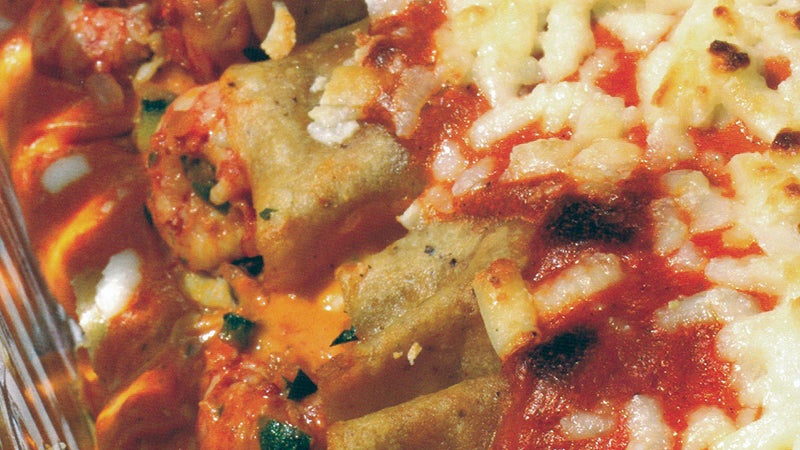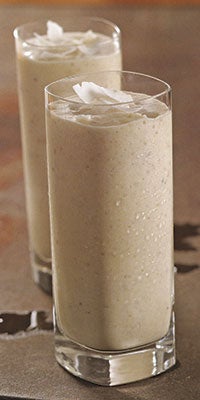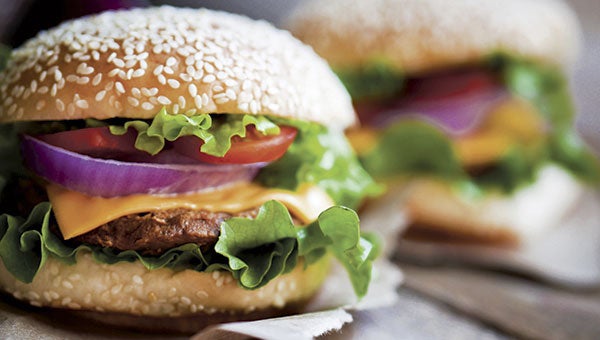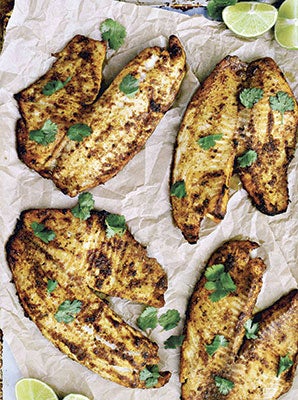‘Green up’ your kitchen, and your health
Published 12:00 am Saturday, August 14, 2010
Continuing with our “green kitchen” techniques, we are going to learn how to wilt greens. Leafy greens of all sorts are good simply wilted, cooked by a combination of steaming and sautéing. Tender greens such as spinach, watercress and pea shoots cook quickly, in just a few minutes, uncovered. The sturdier greens (chard, kale, broccoli rabe, collards, cabbage, beet greens and turnip tops) take longer. These are best cut into ribbons, or shreds, and covered to steam during cooking. It also helps to have a large shallow pan that can accommodate a big mound of leaves at the outset, a tight-fitting lid, and a pair of tongs to stir and lift the greens to keep them moving and cooking evenly.
GREENS WITH GINGER AND CHILE
(This has an Indian note as it is from Niloufer Ichaporia King, born a Parsi in Bombay and author of My Bombay Kitchen.)
4 servings
1 ½ pounds of leafy greens
4 coin-size slices peeled fresh ginger
1 to 2 tablespoons oil
Salt
1 fresh red or green chile, or 1 dried red chile
Sort the greens, removing any tough stems, and wash and drain the leaves. Cut the ginger slices into a fine julienne, or chop them, or simply leave them as round slices. Cover the bottom of a wok or generous skillet with a layer of oil, and heat over medium to high heat. Add some salt to the oil, then add the ginger and the chile pod. Any number of kinds of chile will do; it is for flavor, not heat. If it is a fresh chile, make a slit in it to prevent if from bursting in the heat. When the ginger begins to sizzle, stir it around and add the greens. Use tongs to toss the greens to distribute the oil and flavorings and to keep the greens moving and cooking evenly. Very tender greens will wilt and cook in 1-2 minutes. For sturdier greens, reduce the heat and cover the pan for a few minutes to let them steam and wilt. The greens are delicious served warm or at room temperature.
Cooking plain rice is not mysterious or difficult; it’s as easy as boiling water. A time-honored New Orleans method of measuring the rice and water is to use your finger instead of a measuring cup, as below, but either way, the basic rule applies: 1 part long-grain rice and 2 parts water. Long-grain rice, such as basmati, will be drier and fluffier if it is washed and rinsed before cooking to remove the surface starch from the grains.
To prepare 4 to 6 servings of rice, select a 1 -1 ½ quart saucepan with a tight-fitting lid. Place your index finger on the bottom of the pan and pour in long-grain white rice until it reaches the first joint of your finger. Still using your finger for measurement, pour water into the pan until it reaches the second joint of your index finger. Or measure 1 ½ cups rice and 3 cups water. If you like, add a pinch of salt and a pat of butter.
Place the pan over high heat and bring the water and rice to a full rolling boil. As soon as the water boils, cover the saucepan and reduce the heat to the lowest setting. Cook the rice undisturbed for 20 minutes. Remove the pan from the heat, use a fork to fluff up the grains of rice, and serve. If not serving right away, replace the cover to keep warm until ready.
BOILING PASTA
One always needs to have a few kinds of dried pasta and egg noodles for an impromptu supper. Whatever the shape or type, noodles and pasta cook best in a large pot of boiling salted water so they won’t stick together as they cook. Cook pasta al dente (to the tooth)—cooked through, with no white core at the center, but still firm, not flabby. Thin pastas like spaghettini and delicate egg noodles cook quickly and are often best removed from the water while still undercooked and allowed to finish cooking in a pan of sauce. Thicker pastas take longer and there is less danger of overcooking. Drain the pasta when it is done, but always save some of the cooking water—it is very tasty and useful to add to the pasta and sauce if it is a little thick and needs loosening.
This is a great quick supper dish:
SPAGHETTINI WITH GARLIC, PARSLEY AND OLIVE OIL
2 servings
Salt
1/3 pound spaghettini
2-3 tablespoons olive oil
2 garlic cloves, peeled and thinly sliced
8-10 branches Italian parsley, stems removed, leaves chopped
Bring a generous pot of salted water to boil over high heat, and stir in the spaghettini. Stir frequently and cook for 5 to 6 minutes, until tender but still firm.
Meanwhile, put the olive oil and garlic in a saucepan and heat gently until the garlic begins to sizzle and release its fragrance; take care that it does not brown or burn.
Add the parsley to the pan along with ½ cup of the pasta water. When the pasta is cooked, use a skimmer to life it out of the water and directly into the pan, or drain it, reserving some of the water, and then add to the pan. Toss the paste and let it simmer briefly in the sauce to finish cooking and absorb the flavors; add more pasta water if needed to keep the pasta loose and saucy. Taste the pasta for salt, and add more if needed. Serve immediately in warm bowls.
As I have said before, the kitchen does not have to be fancy nor the equipment. You need to find what you use the most in your kitchen and probably leave some of the fancy gadgets behind. Here are some basic things that I use:
• knives and cutting board.
• compost bucket.
• cast-iron skillets 6, 10, 12 inches.
• 12-inch stainless steel-lined sauté pan.
• 1-quart saucepan.
• 2-3 quart stainless steel-lined saucepan with lid.
• 3-4 gallon stockpot.
• 4-6 quart ovenproof pot with a lid.
• baking sheet and roasting pan.
• earthenware and gratin dishes of various sized.
• steamer basket and sieves.
• salad spinner and colander.
• small food processor or blender, or spice grinder.
• bowl of various sizes.
• mortars and pestles of various sized.
• rolling pin, and tart and pie pans.
• a selection of small tools: wooden spoons, spatulas, whisks, tongs, pepper grinder, vegetable peeler, grater, measuring cups and spoons and a corkscrew.
Knives are worth the investment. It is better to have a few knives of high quality than an array of inferior ones. Choose knives with a high carbon steel content: They will sharpen well on a whetstone and maintain a sharp edge. They should feel well balanced and not too heavy, and the handles should fit comfortably in your hand. Keep knives sharp for best performance, and also for safety. Sharp knives are far safer than dull ones. The three essential knives are a paring knife, a chef’s knife, and a bread knife. While it can be useful to have a few specialty knives for boning, filleting, and carving, a chef’s knife will do these jobs. Finally, a bread knife with a long serrated blade is necessary for slicing bread (sawing, really) – particularly crusty country-style bread.
I hope these tips will help you prepare your food in an easier manner. Cooking I think creates a sense of well-being for yourself and the people you love and brings meaning and beauty to everyday life. All that is required is common sense, the common sense to eat seasonally, to know where your food comes from, and to support and buy from local farmers and producers who are good stewards of our natural resources; and to apply the same principles of conservation to your own home kitchen.
Did you ever watch “Two Fat Ladies” on public TV? I loved the show and will always remember how these very British ladies used their hands in cooking (One always had lots of gaudy rings on her fingers!) Alice Waters talks about fingers, too. She says good cooks cook with their hands: judge freshness, ripeness, condition, judge the doneness of a steak or piece of fish, toss a bowl of salad greens (It won’t crush the tender leaves and you can feel when there is enough, but not too much, dressing.)
As Julia would say, “Bon appétit!”





